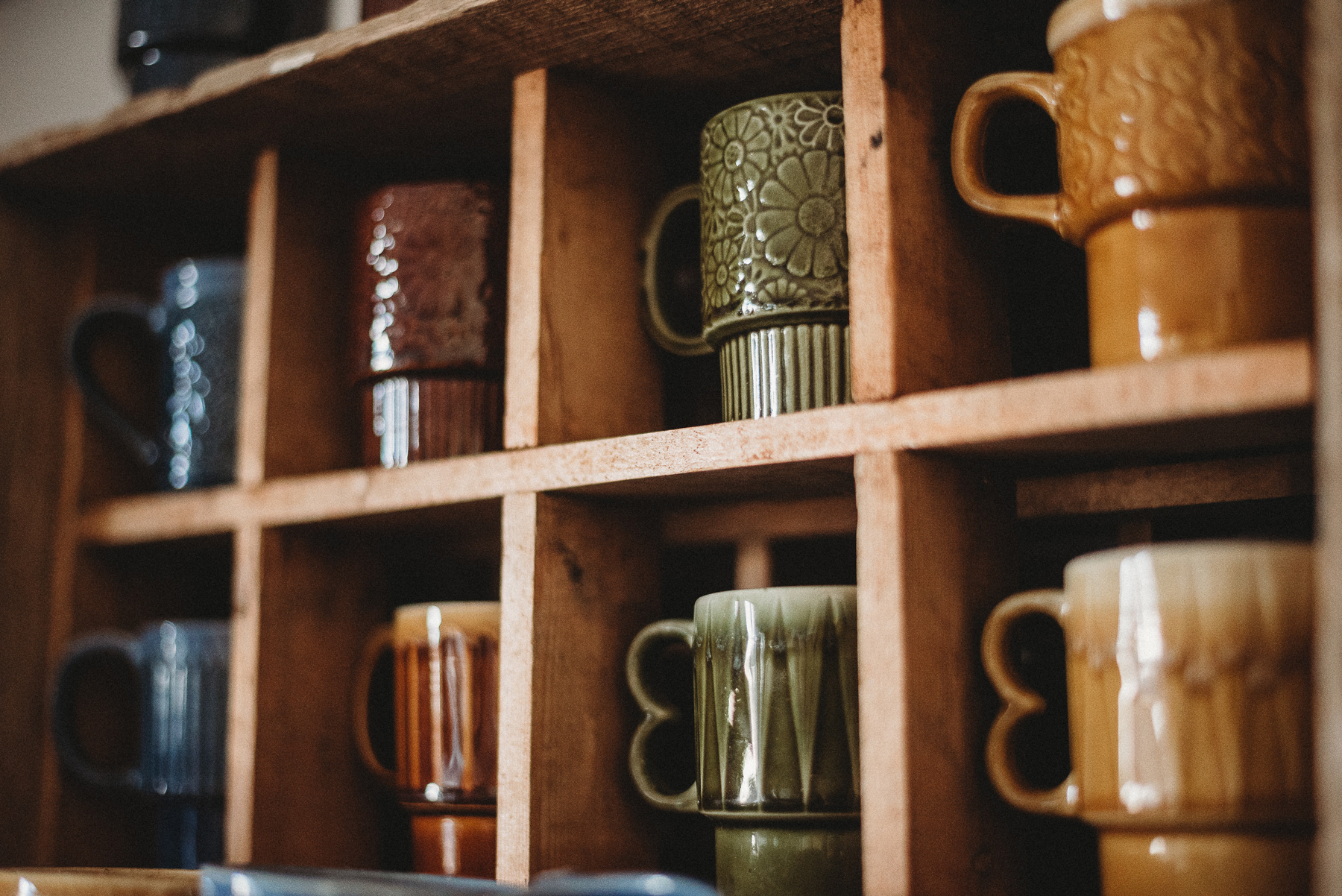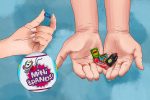I dare you to open your kitchen cabinet and count the number of coffee mugs dotting your shelves.
Perhaps they’re colorful, or maybe they fit a monochrome or grayscale theme. Maybe they vary in shape and size, or you may have a favorite style you stick to religiously. Perhaps every mug has a funny joke on it. Maybe they’re all aesthetically pleasing and artfully designed. Perhaps they’re all thrifted, or you bought them from local boutiques.
A shelf of eclectic mugs seems to be a staple in most residences, almost as if it’s part of the home itself.
For many avid coffee or tea drinkers, the mug they drink their beverage of choice from is an extension of the drink — even a part of the experience. But even for people who don’t drink coffee or tea to kickstart each morning — myself included — a mug collection isn’t uncommon.
I only drink the occasional cup of black tea, yet I currently have five random mugs that look down at me every time I open my kitchen cabinet, telling me I’m “dino-mite” and a “crazy plant lady.”
Why did we all decide that mugs were something we needed? No, not just needed —should curate?
https://www.instagram.com/p/CAGaRr1HN3X/?utm_source=ig_web_copy_link
Let’s take a step back and dissect this from the beginning.
Behold the simple mug. It’s sturdy, it’s easy to grip due to its nifty handle feature and it’s also multipurpose (any mug can be a bowl if you believe hard enough). It’s often decorated, and, although it isn’t required, design seems to be the expectation. If someone had a cabinet full of exclusively white, matching mugs, you’d probably do a double-take; I know I would.
Something about the humble mug makes it incredibly comforting to hold, even if you don’t use the handle. Imagine curling your hands around a plain old water glass on a chilly morning; it’s just not the same. Mugs do the job. They provide emotional satisfaction and come in fun styles in the perfect marriage of function and design.
The stylized simplicity of a mug can be seen in Instagram posts and advertisements, as people convey that sense of comfort and satisfaction through a picture of a mug. A mug post shows the world you did something cute or wholesome that morning by making coffee and drinking it on your patio, or that you went to a local coffee shop for a handcrafted flat white.
https://www.instagram.com/p/CAdZFr7HILh/?utm_source=ig_web_copy_link
Mugs are also great because they’re generally pretty cheap. You can find plenty of donated mugs at Goodwill and thrift shops for less than a dollar. If you’re willing to pay a little extra, you can, but it’s not necessary. Unlike dishes, glasses or utensil sets, which can quickly get expensive, mugs are easy to find at a low price, and most people don’t expect an outrageously high quality for their mugs.
The low price of mugs makes them the go-to gift. Have a favorite teacher? Get them a mug that lets them know. Father’s Day coming up? Get him a “World’s Best Dad” mug. Sending your high school best friend a college care package? Toss a cute mug in there with some tea and a face mask for a self-care night in a box. Mugs are a fail-safe gift idea, and they’re easy enough to tailor to different people.
Getting mugs as gifts is also how many people seem to collect them, which means they have sentimental value too. Buying them from thrift stores is entertaining as well, because they carry an unknown history with them. The irony of having an “Everyone’s Favorite Grandpa” mug is made better by thinking of who that grandpa was. No other kitchen utensil or appliance has this kind of personal, quirky history.
Not only are mugs the only kitchen dishware that we expect to have a story, they’re also the only household objects that we expect to have a story. Photographs are obviously different — their whole purpose is to immortalize stories and memories. And sometimes clothes can carry their own kind of narrative.
But the mug that commemorates your trip to Boston, the dinosaur mug that was a gift from your sister or the chipped mug you accidentally took from work will carry certain memories. Each mug is a personality on a shelf, which makes them enjoyable to collect and difficult to get rid of.
In a world enamored with the concept and practice of minimalism, decluttering what we don’t need and what doesn’t spark joy is the name of the game. Yet mugs are a sneaky exception to both of these categories, as they are functional and create that sense of contentment. Because they tick those boxes, collecting mugs becomes — on a small scale — acceptable hoarding.
https://www.instagram.com/p/B_shFoMg6n_/?utm_source=ig_web_copy_link
Mugs are actually where our personalities shine through because they don’t have to match a certain aesthetic or be “cool.” Having an ironic or funny mug is OK because mugs escape the pressure and judgment that can come from wearing certain clothing or using some pieces in your décor.
Mugs are one of the only things we don’t worry about tossing out, which means they’re just a whole, unchecked collection of things, stories and memories we love. They’re a way to express individuality, to tell the world who we are and that we drink interesting beverages from quirky cups.
So the next time you make a pot of coffee, choose your mug wisely — it says a lot about you.

















